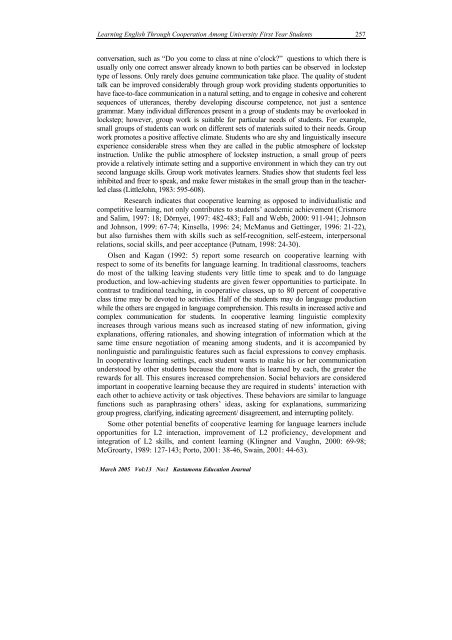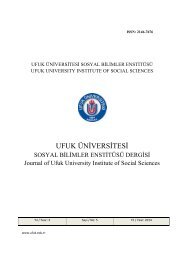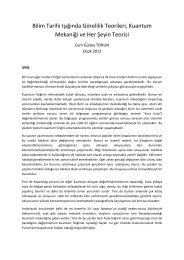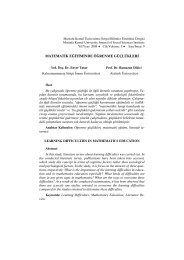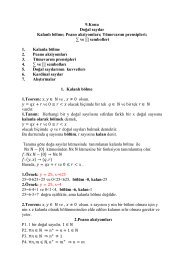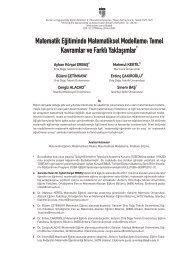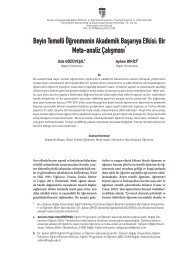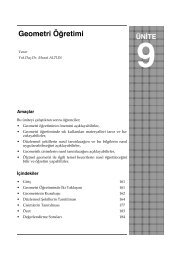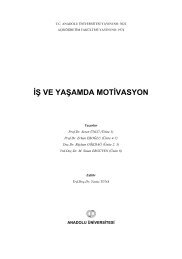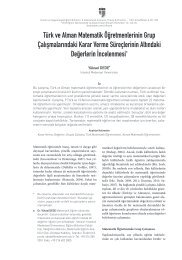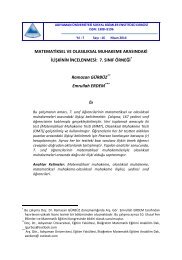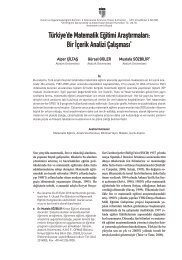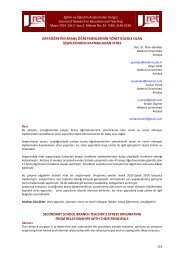You also want an ePaper? Increase the reach of your titles
YUMPU automatically turns print PDFs into web optimized ePapers that Google loves.
Learning English Through Cooperation Among University First Year Students 257<br />
conversation, such as “Do you come to class at nine o’clock?” questions to which there is<br />
usually only one correct answer already known to both parties can be observed in lockstep<br />
type of lessons. Only rarely does genuine communication take place. The quality of student<br />
talk can be improved considerably through group work providing students opportunities to<br />
have face-to-face communication in a natural setting, and to engage in cohesive and coherent<br />
sequences of utterances, thereby developing discourse competence, not just a sentence<br />
grammar. Many individual differences present in a group of students may be overlooked in<br />
lockstep; however, group work is suitable for particular needs of students. For example,<br />
small groups of students can work on different sets of materials suited to their needs. Group<br />
work promotes a positive affective climate. Students who are shy and linguistically insecure<br />
experience considerable stress when they are called in the public atmosphere of lockstep<br />
instruction. Unlike the public atmosphere of lockstep instruction, a small group of peers<br />
provide a relatively intimate setting and a supportive environment in which they can try out<br />
second language skills. Group work motivates learners. Studies show that students feel less<br />
inhibited and freer to speak, and make fewer mistakes in the small group than in the teacherled<br />
class (LittleJohn, 1983: 595-608).<br />
Research indicates that cooperative learning as opposed to individualistic and<br />
competitive learning, not only contributes to students’ academic achievement (Crismore<br />
and Salim, 1997: 18; Dörnyei, 1997: 482-483; Fall and Webb, 2000: 911-941; Johnson<br />
and Johnson, 1999: 67-74; Kinsella, 1996: 24; McManus and Gettinger, 1996: 21-22),<br />
but also furnishes them with skills such as self-recognition, self-esteem, interpersonal<br />
relations, social skills, and peer acceptance (Putnam, 1998: 24-30).<br />
Olsen and Kagan (1992: 5) report some research on cooperative learning with<br />
respect to some of its benefits for language learning. In traditional classrooms, teachers<br />
do most of the talking leaving students very little time to speak and to do language<br />
production, and low-achieving students are given fewer opportunities to participate. In<br />
contrast to traditional teaching, in cooperative classes, up to 80 percent of cooperative<br />
class time may be devoted to activities. Half of the students may do language production<br />
while the others are engaged in language comprehension. This results in increased active and<br />
complex communication for students. In cooperative learning linguistic complexity<br />
increases through various means such as increased stating of new information, giving<br />
explanations, offering rationales, and showing integration of information which at the<br />
same time ensure negotiation of meaning among students, and it is accompanied by<br />
nonlinguistic and paralinguistic features such as facial expressions to convey emphasis.<br />
In cooperative learning settings, each student wants to make his or her communication<br />
understood by other students because the more that is learned by each, the greater the<br />
rewards for all. This ensures increased comprehension. Social behaviors are considered<br />
important in cooperative learning because they are required in students’ interaction with<br />
each other to achieve activity or task objectives. These behaviors are similar to language<br />
functions such as paraphrasing others’ ideas, asking for explanations, summarizing<br />
group progress, clarifying, indicating agreement/ disagreement, and interrupting politely.<br />
Some other potential benefits of cooperative learning for language learners include<br />
opportunities for L2 interaction, improvement of L2 proficiency, development and<br />
integration of L2 skills, and content learning (Klingner and Vaughn, 2000: 69-98;<br />
McGroarty, 1989: 127-143; Porto, 2001: 38-46, Swain, 2001: 44-63).<br />
March 2005 Vol:<strong>13</strong> No:1 Kastamonu Education Journal


